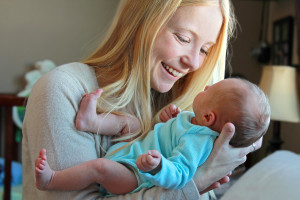Healing after childbirth
 Tips to Not Only Survive, but also Thrive, During the First Few Months After Baby Arrives
Tips to Not Only Survive, but also Thrive, During the First Few Months After Baby Arrives
Giving birth is an extraordinary accomplishment. You may look at celebrities and friends on social media and think that days after welcoming your newborn into the world you should be out and about, sporting a bikini, and feeling energetic. Resist the urge to put too much pressure on yourself to recover quickly. It takes most women nine months to truly feel like they have recovered from their pregnancy. Every woman is different and each birth is unique, however there are some things that you can do to help your body heal effectively post childbirth.
Sleep when your baby sleeps.
Don’t be an overachiever. Your baby’s nap is not the time to do laundry or clean the bathroom. Your body needs rest in order to recover, and with nights interrupted by feedings and changings, you can expect to feel physically exhausted those first few months. Take every opportunity possible to gain extra hours of sleep. As your body recovers and your daily routine normalizes, you won’t require such frequent naps.
Take care down there.
If you tore your perineal area during delivery, or if you had an episiotomy, your body will need some extra time to heal and recover. Your OBGYN may recommend sitting in a few inches of water a few times a day to help keep the area clean. If you experience swelling, use ice packs to help soothe the area.
Get out of the house.
It may be tempting to stay in your pajamas and rest at home, but after a few days, and with your OBGYN’s clearance, you should start getting out of the house and adding some periods of activity to your day. Start simple by taking a walk around the block. Bring your baby with you in a stroller so that you can both benefit from some fresh air.
Have reasonable expectations about your home.
You may have liked your home organized and cleaned to a certain standard before your baby arrived, but take it easy on yourself after delivery. Do your best to stay organized and keep key areas like your bathroom and food prep area clean, but don’t have unrealistic expectations about laundry, dusting, and yardwork. Seek the help of a friend or family member the first few days if you strongly feel the need to tidy up.
Make meals simple.
Your baby’s frequent meals are going to take up a lot of your attention, especially early on. Make meal time simple for the rest of the family. Work together with your spouse to prepare some simple, freezable meals for the week. Just remember not to compromise on quality. You need to stay healthy, so make sure you are eating high quality simple meals, and remember, no alcohol if you are breastfeeding.
Stay in touch with your OBGYN.
If you have any questions or concerns during your recovery, don’t hesitate to contact your OBGYN. He/she will know best how to help you thrive, and not just survive, your first few months after welcoming your baby into your home.

